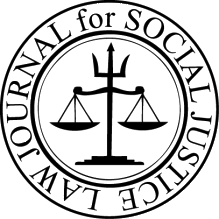By Suha Farid Fasih
The haunting symbol of a red hand over a person’s mouth has become emblematic of a movement demanding justice for Missing and Murdered Indigenous Women.
A grim reality plagues Native communities, as murder is the third leading cause of death for Native women. That statistic increases to 10 times the national average on certain Native American reservations. According to the Urban Indian Health Institute, approximately four in five Native women have experienced violence, with Native women twice as likely as their white counterparts to endure such trauma.

The crisis highlights a disturbing pattern: The murder rate among Native women is three times that of white women, and sexual assault affects 56% of Native women. These horrifying statistics, outlined in a report by the National Congress of American Indians, underscore the urgent need for attention and action to address pervasive violence against Indigenous women in North America.
The roots of the Missing and Murdered Indigenous Women (MMIW) crisis extend to historical and ongoing impacts of European colonialism in the United States and Canada, as well as North American genocide against Native peoples. The National Indigenous Women’s Resource Center emphasizes how federal Indian policies have undermined tribal protections, leaving Indigenous communities vulnerable and unable to prosecute perpetrators—an authority those communities have lacked for more than 500 years.
The complex web of issues contributing to the MMIW crisis includes jurisdictional challenges, historical trauma, and systemic failures within the justice system. Dr. Wendelin Hume, an associate professor of criminal justice at the University of North Dakota studying tribal justice, wrote that the mass historical trauma endured by Indigenous people has eroded trust in authorities, leading to underreported crimes. Moreover, inadequate resources for missing persons investigations and other legal limitations hinder tribal authorities’ efforts to address off-reservation cases or arrest non-tribal individuals.
The MMIW crisis is a manifestation of the broader historical and intergenerational trauma inflicted by colonization, which has left Indigenous communities grappling with profound wounds for at least 500 years. The 2021 discovery of more than 600 children’s remains in a mass grave site linked to a Catholic boarding school for Indigenous children in Canada serves as a stark reminder of the systemic violence and whitewashing of crimes against Indigenous peoples in Canada and the U.S.
Grassroots movements like the MMIW initiative have emerged to demand justice and awareness at local, national, and international levels. The U.S. Department of Justice in 2018 declared May 5 of each year the National Day of Awareness for Missing and Murdered Indigenous Women and Girls, honoring the birthday of Hanna Harris, a 21-year-old Northern Cheyenne woman who went missing and was found murdered in 2013. These efforts seek to challenge the silence and inaction surrounding the crisis.
The MMIW crisis is not limited to reservations: It also extends to urban areas where Native Americans face unique challenges due to poverty, lack of cultural resources, jurisdictional issues, and inadequate reporting policies. The stereotypes perpetuated by colonization further hinder the search for missing Indigenous women, as negative biases influence law enforcement responses and media coverage.
Society must recognize the intersectionality of gender-based violence and the MMIW crisis, and acknowledge the historical trauma and ongoing impact of colonization. As the red hand symbolizes the silenced voices of missing Native sisters, it is our collective responsibility to amplify those voices, raise awareness, and advocate for justice. Indigenous women and girls deserve more than symbols—they deserve international attention and a collaborative commitment to dismantle the systemic issues that perpetuate this heartbreaking crisis.
Suha (she/her) is presently a 2L at the Sandra Day O’Connor College of Law at Arizona State University. Before embarking on her legal studies journey, Suha earned a master’s degree from the Balsillie School of International Affairs. Her specialization in International Public Policy, focused on global governance and human security, reflects her dedication to understanding complex international issues.
Suha’s legal passions gravitate towards the realm of international human rights, particularly with regard to the rights of refugees, asylum seekers, and migrants. She also holds a keen interest in governmental policy and advancing diversity initiatives. Beyond her academic pursuits, Suha finds joy in exploring diverse restaurants and cherishing quality moments with her loved ones in her home and native land, Canada.
